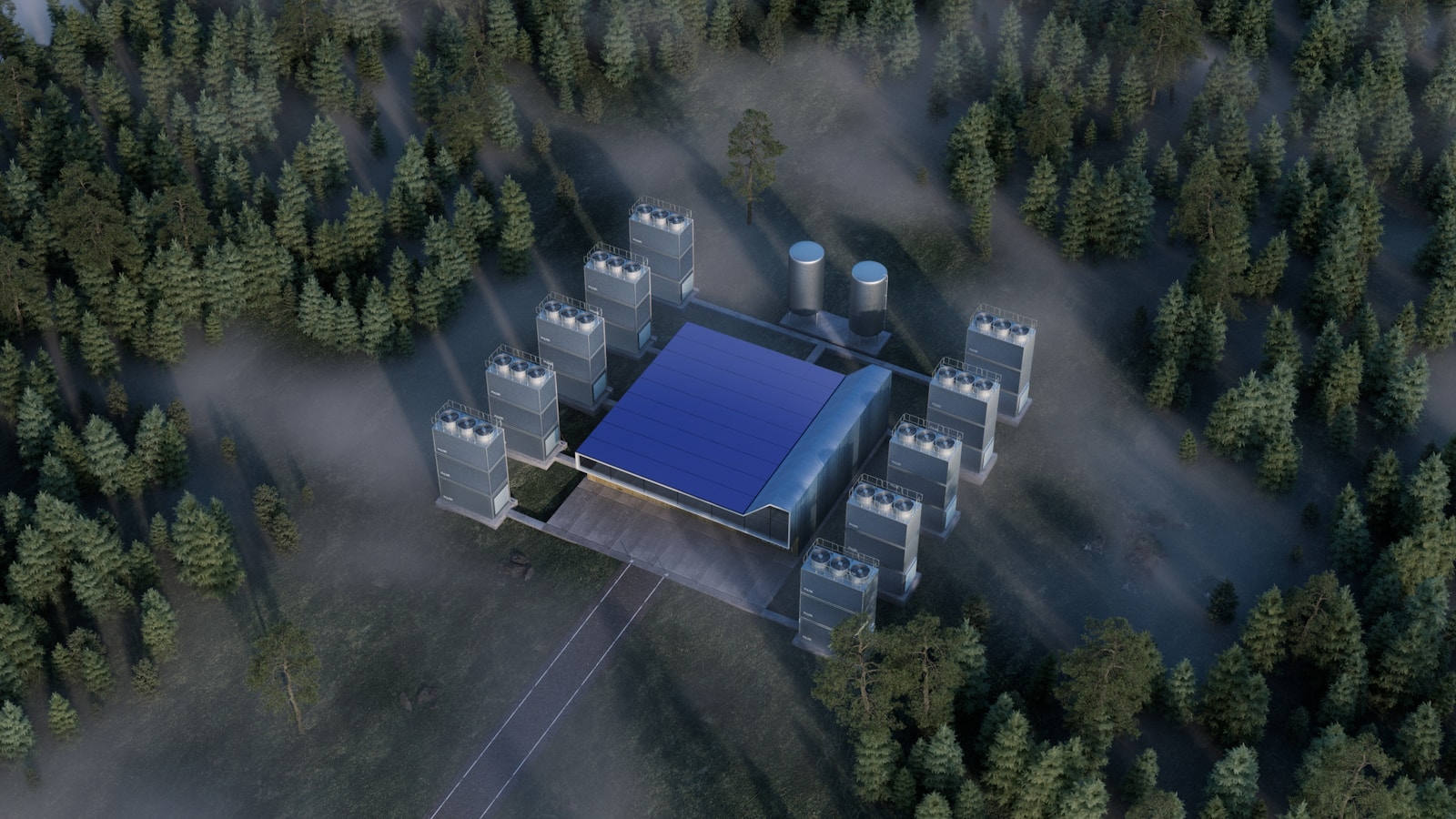Key takeaways
- AI data centers need huge amounts of water to stay cool
- In 2023 US centers used 17 billion gallons of water directly
- By 2028 direct water use could more than double or even quadruple
- Tech companies report their water use in different and often vague ways
- Without clear data, communities and regulators lack the facts they need
Why Data Centers Need So Much Water
Data centers power the apps and services people use every day. They run powerful processors that make our videos stream, our searches fast, and our smart assistants respond. These processors produce heat while they work. If they get too hot, they can slow down or break. To prevent damage, data centers must stay cool around the clock.
How Water Cools Computers
Large data centers often use water to carry away heat. In one approach, cool water flows through pipes near the computer racks. As the water absorbs heat, some of it turns into steam. The steam escapes and the data center draws in fresh cool water. This method uses huge volumes of water over time.
In another approach, data centers use a closed loop. Water still moves heat out of the computers. But instead of letting steam escape, air chillers cool the water and return it to the system. This loop cuts how much fresh water the data center needs. However, it uses more electricity to run the chillers.
Despite the differences, both systems rely on local water supplies. In a busy data center, cooling can account for more than a quarter of a small town’s daily water use. More still flows indirectly to make the power that runs chillers and pumps.
Direct and Indirect Water Use
Experts measure two types of water use for data centers. Direct use is water withdrawn for cooling and not returned. Indirect use is water needed to generate electricity. When power plants burn coal or natural gas, they withdraw water to make steam. They also need water to cool their own systems.
In 2023 researchers estimated that US data centers withdrew 17 billion gallons of water directly for cooling. They also estimated 211 billion gallons were used indirectly to produce the electricity that powers these centers. In total, that equals 228 billion gallons of water for a single year.
Moreover, those direct figures could grow fast. By 2028 direct withdrawals could double or even quadruple as more AI services come online. This rapid growth means communities near data centers may face new stress on their water supplies.
Challenges in Tracking Water Use
Getting accurate water data can be tricky. Municipal water departments keep records but they often protect details for privacy or business reasons. Public requests for data can take months. Then the data may be incomplete or unclear.
So researchers turned to tech companies’ own sustainability reports. Many leading firms publish annual updates on their environmental impact. These reports vary in detail and format. As a result, comparing water use across companies and sites proves difficult.
Company Water Disclosures Vary
Six major data center operators include Amazon, Google, Microsoft, Meta, Digital Realty, and Equinix. When researchers reviewed their sustainability reports, they found big gaps and mixed methods.
Amazon shares general progress on its environmental goals. But it does not break out how much water its data centers use. Microsoft reports total water use across all its operations. It does not single out data centers. Meta offers a global water use number and says most of that goes to its data centers. Google stands out by reporting water use for each data center it runs.
Because these disclosures are voluntary, each company picks what to share. Some list total water withdrawn. Others list only water consumed. None consistently report the water used to generate their electricity.
A Closer Look at Google and Meta
Google and Meta lead in public water reporting. In 2023 Meta said it withdrew 813 million gallons of water globally. It consumed 95 percent of that in its data centers. In other words, its centers used 776 million gallons of water for cooling.
Google reported 6.4 billion gallons of water use worldwide in 2023. Ninety five percent of that went to its data centers. That equals 6.1 billion gallons used for cooling alone.
Within Google, one data center in Iowa withdrew 1 billion gallons in 2024. That amount could supply all homes in that state for five days. By contrast, an air cooled Google site in Texas withdrew only 10 thousand gallons. That is roughly what a typical Texas home might use in two months.
These figures show how much water need varies by design and location. They also reveal that air cooling can slash water use. However, air cooling may boost electricity needs and energy costs.
The Wider Impact
Data centers cluster in areas with cheap power and cool climates. The Great Lakes region draws attention because it has abundant water and moderate temperatures. Plans for a large new center in Wisconsin highlight this trend. Yet more data centers may strain local water supplies and risk groundwater levels.
Nearly 40 million people in the Great Lakes region depend on those shared waters for drinking, farming, and business. Fishing and tourism also rely on healthy water levels. If data centers pull large volumes, they could disrupt existing needs and ecosystems.
In other parts of the country, groundwater aquifers already face stress from agriculture and drought. A new data center might worsen shortages if its water use jumps. Without clear tracking, communities cannot plan for growth or set limits on withdrawals.
Moving Toward Transparency
As AI technologies expand, data centers will grow too. This growth makes clear water data ever more vital. Communities and decision makers need reliable figures to balance uses. Law makers must set fair rules. Planners must ensure local water remains safe and plentiful.
To improve transparency, companies could adopt standard reporting methods. They could publish both direct and indirect water use by location. They could detail water volumes withdrawn, consumed, and returned. They could also note whether their cooling systems use open or closed loops.
Meanwhile, regulators could require public disclosure of data center water permits and actual use. They could update rules based on local water risk. They could also promote water recycling and reuse in data center cooling.
In the end, our digital world needs data centers and water alike. By tracking water use closely, we can keep both resources running smoothly. Open reporting will help balance innovation with community needs. It will also safeguard water for generations to come.



